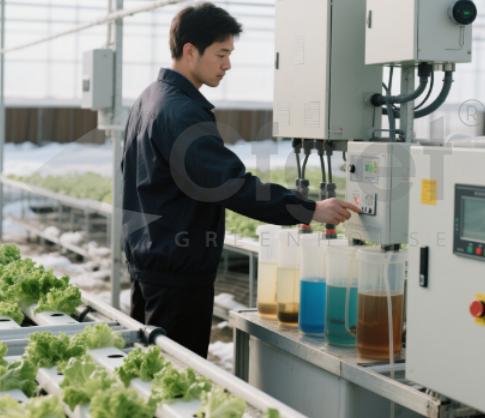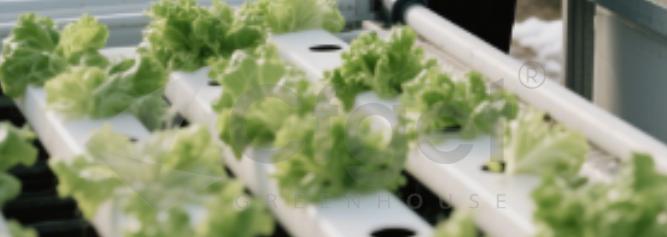Winter greenhouse gardening can be a rewarding way to enjoy fresh lettuce, but it requires careful planning and management. Choosing the right varieties, maintaining optimal temperatures, and managing nutrients are key to a successful harvest. Let’s dive into how you can optimize these factors for your winter greenhouse lettuce.
Which Lettuce Varieties are Cold-Tolerant, High-Yielding, and Disease-Resistant?
Selecting the right lettuce varieties is crucial for winter greenhouse growing. Here are some varieties that are known for their cold tolerance, high yield, and disease resistance:
Butterhead Lettuce
Butterhead lettuce is prized for its soft, buttery texture and excellent flavor. It is highly cold-tolerant and can withstand temperatures as low as 15°C (59°F). This variety is also resistant to common diseases like downy mildew and soft rot, making it a great choice for winter greenhouses.
Wintergreen Lettuce
Wintergreen lettuce is specifically bred for winter growing. It has a long growing season but offers high yields and great taste. This variety is highly resistant to frost and can tolerate temperatures down to -5°C (23°F), making it ideal for cold climates.

Oak Leaf Lettuce
Oak Leaf lettuce is named for its oak leaf-shaped leaves. It is cold-tolerant and can grow well in temperatures as low as 10°C (50°F). This variety is also resistant to diseases like black spot and downy mildew, ensuring healthy growth even in winter conditions.
How to Maintain Greenhouse Temperature Using Heating Systems and Coverings?
Maintaining the right temperature in your greenhouse is essential for healthy lettuce growth. Here are some strategies to keep your greenhouse warm during winter:
Heating Systems
Installing a heating system can help maintain a consistent temperature in your greenhouse. Options include:

Electric Heaters: These are easy to install and can be controlled with a thermostat to maintain the desired temperature. They are ideal for small to medium-sized greenhouses.
Propane Heaters: These are efficient and can be used in larger greenhouses. They provide a steady heat source and can be adjusted as needed.
Insulation and Coverings
Insulating your greenhouse can help retain heat and reduce the need for constant heating. Consider the following:
Double Glazing: Adding a second layer of glass or plastic can significantly improve insulation and reduce heat loss.
Thermal Blankets: These can be placed over plants at night to provide additional warmth and protection from frost.
How Do Soil pH and Light Affect Winter Greenhouse Lettuce?
Soil pH and light levels are critical factors that can impact the health and yield of your winter greenhouse lettuce.
Soil pH
Lettuce prefers a slightly acidic soil pH between 6.0 and 6.8. Maintaining this pH range ensures that nutrients are readily available to the plants. Regularly test your soil pH using a soil test kit and adjust as needed using lime to raise the pH or sulfur to lower it.
Light
Lettuce requires at least 8 to 10 hours of light per day for optimal growth. In winter, when daylight hours are shorter, you may need to supplement with artificial light. Use full-spectrum LED grow lights to provide the necessary light spectrum for photosynthesis. Place the lights about 6 to 12 inches above the plants and set them on a timer to ensure consistent light exposure.
How to Use Nutrient Solution Temperature Control and Disinfection to Promote Healthy Growth of Hydroponic Lettuce?
Hydroponic systems offer precise control over nutrient delivery, which is especially beneficial in winter. Here’s how to manage your hydroponic system for optimal lettuce growth:
Nutrient Solution Temperature Control
Maintaining the right temperature for your nutrient solution is crucial. Aim for a temperature range of 18°C to 22°C (64°F to 72°F). Use a water heater or chiller to regulate the temperature and ensure it stays within this optimal range. Insulate your nutrient reservoir to reduce temperature fluctuations.
Disinfection
Regularly disinfecting your hydroponic system can prevent the buildup of harmful pathogens. Use a mild bleach solution (1 part bleach to 10 parts water) to clean your system components. Rinse thoroughly with clean water to remove any residue. Additionally, use hydrogen peroxide to sanitize the system and ensure a healthy growing environment.
Wrapping Up
Growing lettuce in a winter greenhouse involves selecting the right varieties, maintaining optimal temperatures, and managing nutrients effectively. By choosing cold-tolerant, high-yielding, and disease-resistant varieties, using heating systems and coverings to maintain temperature, and ensuring proper soil pH and light levels, you can achieve a successful harvest. For hydroponic systems, controlling nutrient solution temperature and regular disinfection are key to healthy plant growth. With these strategies, you can enjoy fresh, crisp lettuce all winter long.

Post time: May-17-2025







 Click to Chat
Click to Chat